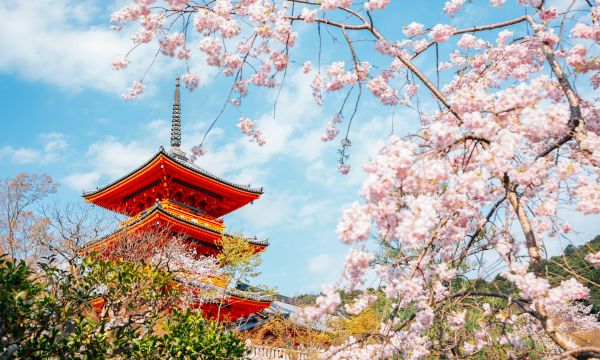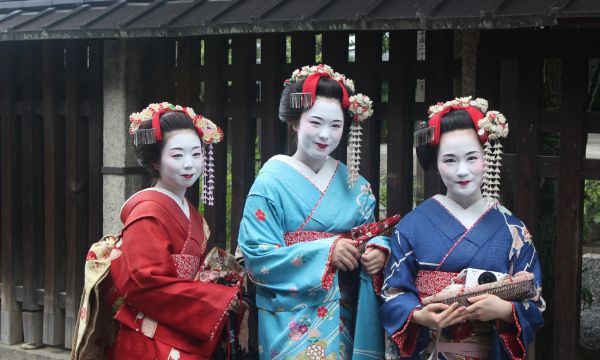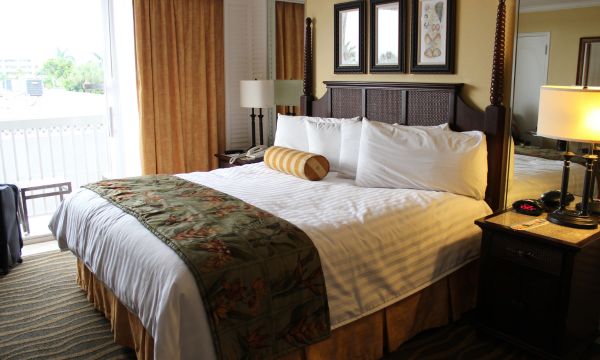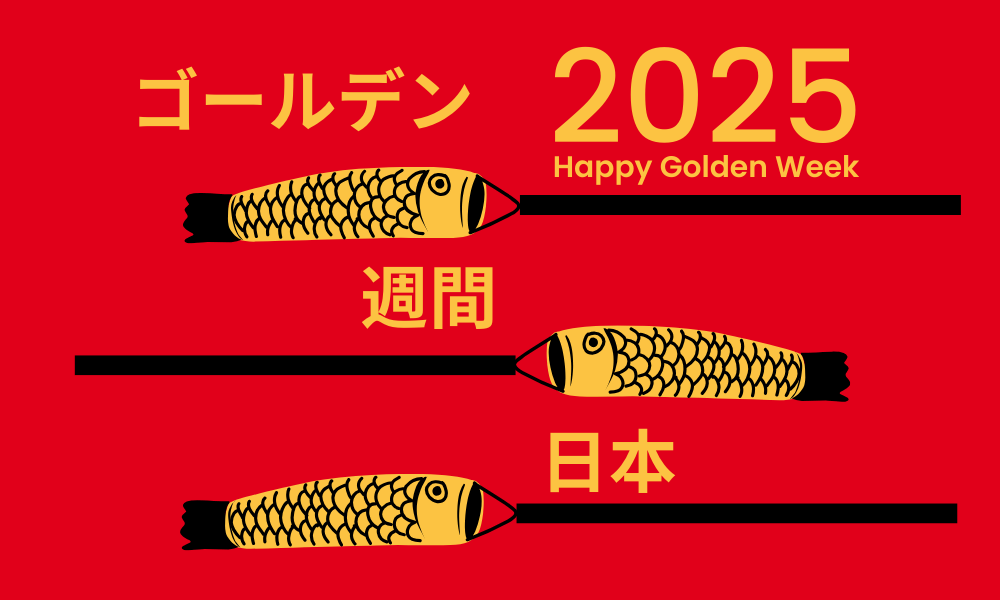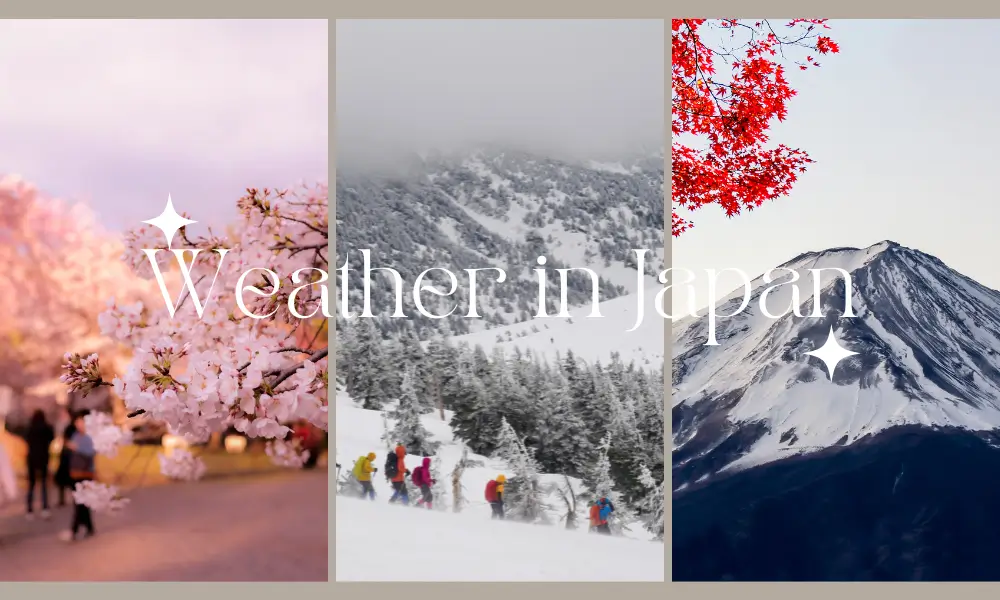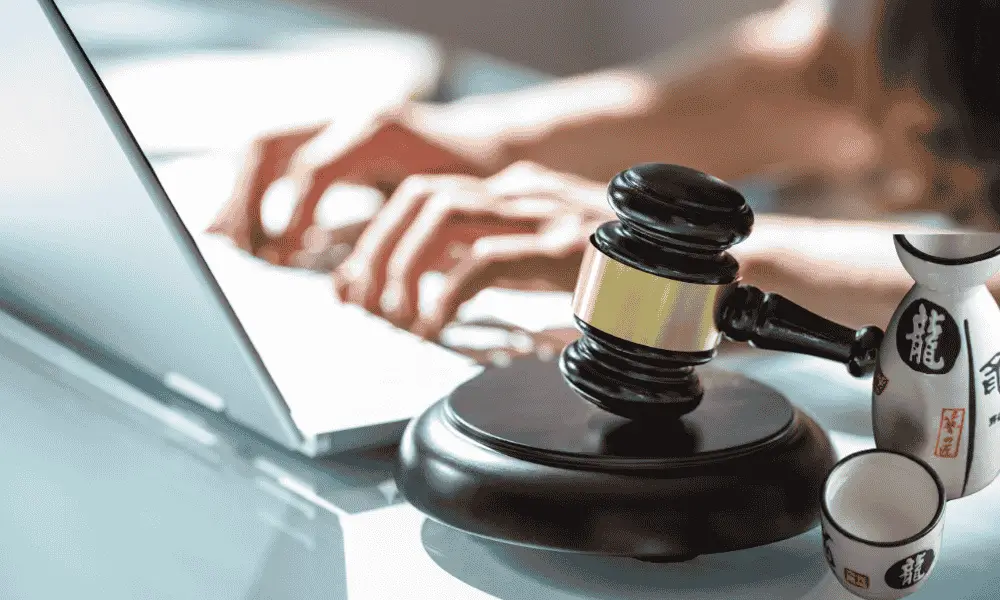Last updated on November 23rd, 2024 at 08:09 pm
Best time to visit the Philippines means visiting endless beaches, trekking through lush jungles, and immersing yourself in vibrant cultures across thousands of islands. But timing can make or break your trip, with weather playing a big role. If you’re dreaming of sunny beach days, diving adventures, and rich cultural experiences, knowing the best time to go is essential. Here, we break down the seasons to help you plan your perfect getaway.
Show the relevant content
Toggle- Timing Your Trip Perfectly
- 1. Dry Season (December to February)
- 2. The warm and dry season is from (March to May)
- 3. Monsoon (June to November)
- Monthly Breakdown for best time to visit the Philippines
- Summary Chart: Choosing the Best Time to visit the Philippines Based on Your Priorities
- Real-world experience of a traveller
- Final Thoughts: Travel with Confidence
Timing Your Trip Perfectly
The Philippines is made up of over 7,000 islands, each offering unique landscapes and cultures. However, with its tropical climate, the weather can vary a lot, and not every month is perfect for visiting. Many travelers assume it’s always sunny, only to end up in rainy or typhoon-prone areas or stuck in crowds during peak season. Knowing more about the weather, tourist seasons, and local events can help you avoid these common pitfalls and plan a better trip.
Best time to visit the Philippines experiences three main types of seasons.
Additional Cooling Moist Season (December, February)Cool and dry seasons.
The Summer—Hot and Dry Season (March to May)
Rains (June through November)
Every season brings unique challenges to different regions. Let’s address these issues to create the ideal travel itinerary.
Also Read: What is the best time to visit japan?
Excess: Where Poor Timing Can Lead to Economic Dislocation
One common mistake travelers make is not accounting for the time spent away from home, whether that’s due to weather delays, lost days of planned activities, or unexpected expenses. Here are some potential issues to keep in mind:
Unpredictable Weather: If you visit during the rainy season, some island areas may be off-limits, boat trips to smaller islands might be canceled, and flights could be delayed.
Crowded Peak Seasons: During the busiest months, like December to February, tourist numbers are high, leading to pricier accommodations and long lines.
Missed Events: Arriving outside of major festivals or seasonal activities means you might miss out on unique cultural experiences that could make your trip even more memorable.
Choosing Your Best time to visit the Philippines
I will break down each season’s highlights, so you can pick the ideal time based on what matters most to you—whether it’s beach days, cultural festivals, or adventure sports.
1. Dry Season (December to February)
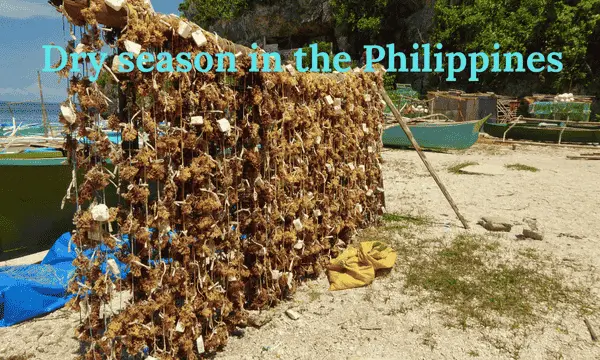
Many travelers choose to visit during this period, and for good reason. These months bring comfortable temperatures, little to no rain, and stable weather.
Weather and Conditions:
Temperature: A pleasant 24-30°C.
Rainfall: Minimal across most areas.
Humidity: Lower than any other season, perfect for outdoor activities.
Ideal Activities:
Beach Escapes: With sunny skies and cooler temperatures, it’s the perfect time to relax at top beaches like Boracay, Palawan, and Cebu.
Water Sports: Calm seas and clear waters make it ideal for swimming, snorkeling, and scuba diving.
Hiking and Nature: Cooler weather is great for exploring the Banaue Rice Terraces or climbing Mt. Pulag.
Key Events:
Sinulog Festival (Cebu): Held on the third Sunday of January, this lively festival is one of the Philippines’ biggest celebrations.
Ati-Atihan Festival (Kalibo): In January, this festival brings vibrant street dancing and deep cultural connections.
Pros:
Reliable Weather: Consistent weather makes planning easy.
Cultural Festivals: Experience rich cultural events that bring the spirit of the Philippines to life.
Perfect for Outdoor Activities: Lower temperatures make it a great time for hiking and island hopping.
Cons:
Higher Costs: Prices for flights and hotels tend to peak during this busy season.
Crowds: Popular spots can get crowded, sometimes taking away from the cultural experience.
For those seeking a cultural adventure, it’s worth planning around these festivals and being prepared for higher prices and busier sites.
2. The warm and dry season is from (March to May)

It is one of the best time to visit the Philippines, also known as summer, which brings hotter temperatures, making it suitable for beach-related or water activities.
Weather and Conditions:
- Temperatures range from 27°C to 35°C, often quite hot, especially in the valley.
- Rainfall was limited, but there was some additional rain on higher ground.
- The humidity is high, making some inland destinations oppressively hot.
Ideal Activities:
- Island Hopping: March to May brings the sunniest skies and clearest waters, making it perfect for exploring islands like El Nido and Coron (Palawan) or Siargao.
- Diving and Snorkeling: With excellent underwater visibility, it’s a great time to dive into the colorful marine life at Tubbataha Reefs and other top spots.
- Wildlife Spotting: Summer is also ideal for spotting dolphins and whales as they migrate through these waters.
Key Events:
- Pahiyas Festival (Lucban): Held in May, this lively harvest festival showcases houses decorated with fruits and harvests, making it one of the most colorful events in the Philippines.
- Holy Week (April): Celebrated nationwide, this week-long religious observance includes vibrant reenactments and ceremonies.
Pros:
- Ideal Weather: Clear skies and warm waters make it perfect for swimming, diving, and snorkeling.
- Wildlife Season: It’s the best time for spotting marine wildlife.
- Festivals: Enjoy Filipino culture through festivals like Pahiyas and Holy Week, with their traditional and religious celebrations.
Cons:
- Heat: It can get very hot, especially inland, so be prepared for high temperatures.
- Crowds: Popular beaches and islands are bustling with tourists, especially during Holy Week.
This season is best time to visit the Philippines and perfect for sun-seekers, water sports lovers, and anyone looking for fun on the beach or exciting diving trips.
3. Monsoon (June to November)
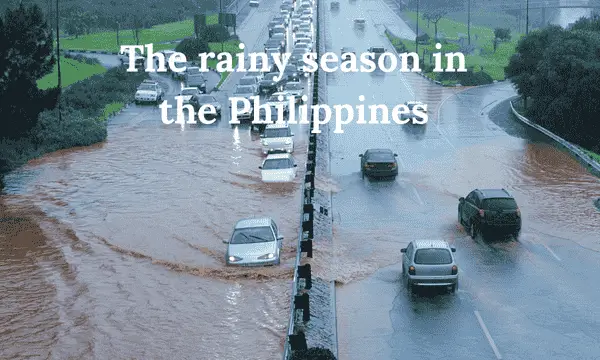
The rainy season in the Philippines comes with typhoons and heavy rain, so many travelers skip it. But for those who can adapt, it has its own perks.
Weather and Conditions:
- Temperature: Warm, around 25-32°C, with frequent rain.
- Rainfall: Heavy, especially from July to September, with increased typhoon risk.
- Humidity: High, giving a tropical feel but making outdoor activities challenging.
Ideal Activities:
- Surfing: If you’re a surfer, this season brings the best waves in Siargao.
- Indoor Attractions: Great time for visiting museums, historical sites, and other indoor spots unaffected by rain.
- Hot Deals: Enjoy off-peak prices for accommodations, flights, and tours.
Key Events:
- Kadayawan Festival (Davao): Held every August, this festival celebrates Davao’s harvest with parades, street dances, and vibrant flower-filled floats.
- MassKara Festival (Bacolod): In October, this festival brings lively mask parades and street dancing, adding color to the rainy season.
Pros:
- Budget-Friendly: Great deals on flights, hotels, and tours.
- Less Crowded: Enjoy tourist spots with fewer people.
- Great Surfing: Bigger waves make it a prime time for surfers.
Cons:
- Unpredictable Weather: Rain and typhoons can disrupt travel plans, especially on the main islands.
- Limited Outdoor Activities: Rough sea conditions may make island hopping and similar activities unsafe.
Best for: Budget travelers, surfers, and festival-goers who don’t mind a bit of rain.
Monthly Breakdown for best time to visit the Philippines
January
- Weather: Expect generally fair and cooler conditions over Luzon and the Visayas.
- Experience: The Sinulog Festival in Cebu, perfect for island hopping and beach enthusiasts
- Florence is the perfect destination for you if you enjoy immersing yourself in culture and spending time at the beach.
February
- The climate remains largely unchanged from January, with mild temperatures and minimal rainfall.
- Note: Best for Diving: The Palawan and Coron.
- Divers and adventure seekers will find it ideal as it offers superior underwater visibility.
March
- Weather: Shift into hot season; warmer, but still dry.
- Highlights: The best shore locations are those where the marine environments are far more calm.
- This is ideal for those who love the sun and like to get wet.
April
- Weather: Very dry and VERY HOT.
- Season: Best diving and snorkelling conditions.
- What It’s Best For: Seeing marine life in Tubbataha and Apo Island
May
- The weather is hot and humid, with rain starting in some areas.
- The Pahiyas Festival in Lucban and the summer end celebrations are taking place.
- The key attractions are the cultural experience and the monsoon festivals, which begin in June. Best Time To Visit: Before Monsoon Starts.
June
Weather: The monsoon season has just begun, bringing light rain.
Surfing in Siargao: The surfing season is kicking off, and it’s a great time for budget travelers and surfers who don’t mind a bit of rain.
July
- The climate is characterized by high humidity and typhoons during the rainy season.
- Summary: Ideal for indoor cultural tours and museum walks.
- This destination is ideal for budget travellers looking for less crowded destinations.
August
- The weather is consistently rainy, with a possibility of typhoons, especially in Luzon.
- The Kadayawan Festival in Davao primarily celebrates the local culture while also highlighting the harvest.
- Who Should Stay Here: Festive folks; Pinchpennies.
September
- Weather: Rain is expected to persist, with the possibility of typhoons developing.
- Winner: Siargao Continuously shines on.
- Good for: Those who are interested in surfing, and those after places that feel off the beaten path.
October
- Weather: Exiting the wet season
- Highlights include the MassKara Festival in Bacolod, which is renowned for its vibrant masks and parade.
- This is perfect for anyone who wants to experience local culture and festivals.
November
- Weather: Showers taper; cooler and drier.
- When is the best time to hike the Banaue Rice Terraces and the Cordillera?
- This product is ideal for hikers and people who dislike crowds.
December
- The weather is cool and dry, particularly in Luzon and the Visayas.
- Highs: The world celebrates Christmas, and the weather is perfect for the beach.
- This destination is ideal for travelers seeking a blend of authentic culture and idyllic beach weather.
Summary Chart: Choosing the Best Time to visit the Philippines Based on Your Priorities
| Priority | Best Season | Recommended Months | Locations |
| Beaches | Cool/Dry, Hot/Dry | Dec-Feb, Mar-May | Boracay, Palawan, Siargao |
| Diving | Hot/Dry | Mar-May | Tubbataha, Coron, Apo Island |
| Cultural Festivals | Cool/Dry, Rainy | Jan, Aug, Oct | Cebu, Davao, Bacolod |
| Surfing | Rainy | Jul-Nov | Siargao, Baler |
| Budget Travel | Rainy | Jun-Nov | Multiple Locations |
Real-world experience of a traveller
Take, for example, the experiences of James, a British traveler who went to the Philippines in July. Despite James’s desire for island hopping, the rains disrupted his plans. But he successfully scored discounted stays alongside nearly empty beaches and even managed to attend the Kadayawan Festival in Davao.
Rain or no rain, he managed to get out, and with a bit of slack, his off-season trip was both fun and easy on the wallet. Despite having to adjust his itinerary due to the rainy season, James still managed to make a significant profit.
FAQs: Your Questions Answered
When is the best month to visit the Philippines?
The majority of travellers find the period from December to February is the best time to visit the Philippines, as it offers cool and dry conditions and opportunities for engaging in scenic outdoor adventures.
When is the best time to go to the Philippines?
If you’re looking for beach fun, festivals, or diving holidays, December to May are the best months to visit.
When to Visit the Philippines—The Best Season?
The latter pertains to both the regional likelihood of precipitation and temperatures, with most sources identifying the cool dry season (December–February) as directly providing either pleasant or minimal rain.
What is the optimal month to visit the Philippines?
The months of June to November is the best time to visit the Philippines, which coincide with the rainy season and offer fare discounts on both flights and accommodations, including tours, are the least expensive times.
Final Thoughts: Travel with Confidence
When visiting the Philippines, it’s important to align your priorities with the seasonal offerings for a truly thrilling journey. We are happy to say that the tropical paradise of the Philippines has something for everyone all year round, whether you’re a beach aficionado, an intrepid explorer, or merely interested in experiencing some local culture. Travelling during all seasons means facing different challenges, but if you know in advance what to expect and how exactly each season works, then you can make the most out of your trip.
Ready to pack your bags? This guide aims to assist you on your journey, respect your preferences, and help you make the most of your time in the Philippines!

